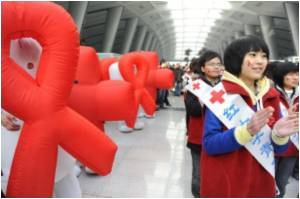
Spending on HIV/AIDS programs was 6.16 billion dollars, or nearly a quarter of the total funding, said the report released on the eve of World AIDS Day.
The AIDS pandemic, which has claimed some 25 million lives since the immune deficiency disease was first reported in 1981, is one of the reasons that funding from wealthy nations for global health programs has gone up sharply, Chris Murray, the lead author of the report, told AFP.
"Until the HIV epidemic came along, we didn’t have this sudden explosion of funding for global health," Murray said.
The surge in funding for health in developing countries was fueled in part by a sense of "moral outrage felt by many people in the West at the fact that if you had money, you could get this miraculous triple-drug treatment for HIV," but the same treatment was not available in poor countries.
"That and the presence of highly effective AIDS activism and advocacy groups has been a big driver in the expansion of global health funding in high-income countries," he said.
Advertisement
In 1990, sub-Saharan Africa got around 10 percent of global health aid.
Advertisement
Malaria claimed nearly one million lives, mostly among African children, in 2008, and tuberculosis killed 1.7 million people last year, with the highest toll in Africa, according to the World Health Organization.
Some 300,000 mothers still die each year and more than seven million children die before the age of five, Murray said.
AIDS-related deaths are estimated at about 1.8 million globally last year by the UN agency for the disease. Many of the deaths were from tuberculosis and 1.3 million victims were in Africa.
But expanded access to HIV/AIDS treatment in sub-Saharan Africa has dramatically cut deaths from the disease, according to a UN report released last week.
An estimated 320,000 fewer people die of HIV-related causes in 2009 in sub-Saharan Africa than in 2004, when the region began to dramatically scale up access to anti-AIDS drugs, according to the United Nations AIDS agency’s 2010 global report on the epidemic.
Murray said the IHME report, which analyzed data from 1990-2007 and used government budgets, spending patterns and other data to project levels of global health funding through 2010, which were not available, was intended to spur debate about how to allocate development aid for health programs.
"Our view is that good information, both on where the money goes and what are people’s health problems, will trigger all sorts of debate and discussion in developed and developing countries, and this will lead to better decision-making -- without us having to write a prescription for it," he said.
Source-AFP














